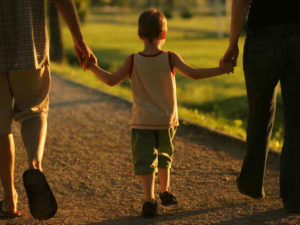
With regard to the concept of adoption in Islam, we seek guidance from Sunnah of the Prophet Muhammad (P.B.U.H). At the time of prophet’s marriage (P.B.U.H) with Hazrat Khadija (R.A), she gave a slave namely Zayd Bin Haritha to Prophet Muhammad (P.B.U.H) and the Prophet Muhammad (P.B.U.H) took good care of him and their relationship changed from that of master and a slave into one of father and son. Zayd was one of the first persons to have accepted Islam
. When his father and uncles came to know about his whereabouts, they came to Makkah and told Prophet Muhammad (P.B.U.H) that Zayd had been captured by some thieves and sold into slavery. The Prophet set him free, but Zayd refused to leave Prophet Muhammad (P.B.U.H) and go home with his father. Haritha the father of Zayd, became very angry and openly declared that from now on “Zayd is not my son”. The Prophet immediately responded by adopting Zayd. Zayd came to be know as Zayd Bin Muhammad. This continued till after the Prophet Muhammad (P.B.U.H) migrated to Medina. Zayd had grown up and was now a married man. However, his marriage did not work out. Allah revealed some verses related to Zayd’s divorce in which Almighty also talks about the issue of ‘re-naming’ the adopted children.
The Almighty says:
‘And Allah did not make your adopted children your sons. This is only your words coming from your tongues. And Allah says the truth and He guides you to the right path. Call them with reference to their (real) fathers. It is more just in the sight of Allah”. (33.4)
What this means is that adoption does not change the relationship of a person with his real parents and siblings, nor does it create real relationship between him and his adoptive parents and their children. The practical implications of this view on the one hand is that all the rules which apply between blood relatives are still valid; for example the child will still be mahram; that an adopted child cannot marry his/her real siblings; he or she is also eligible for inheritance from the real parents; and there is no need for hijab between the child and his or her real family. On the other hand, the rules that apply between non-related persons are still valid. For example, adoption would not create the mahramiyyat between child and the new family. In Islam, the right of inheritance is based on uterine relationship.
However, there is only one case of adoption where a sort of semi-familial relationship and mahramiyyat is created between the adopted child and the adoptive family: when the adopted child is below two years of age and is also breast-fed directly by the adoptive mother for at least a day and a night. This creates a foster rizai relationship , and the child is mahram to the new family- there is no need for hijab, nor can the child marry the real children of the adoptive parents. However, in case of inheritance, even a rizai child has no right in the estate of the adoptive parents. But as mentioned above, the adoptive parents can write up to one third of their estate for their adopted child.
